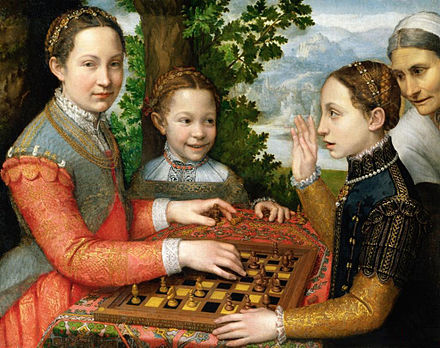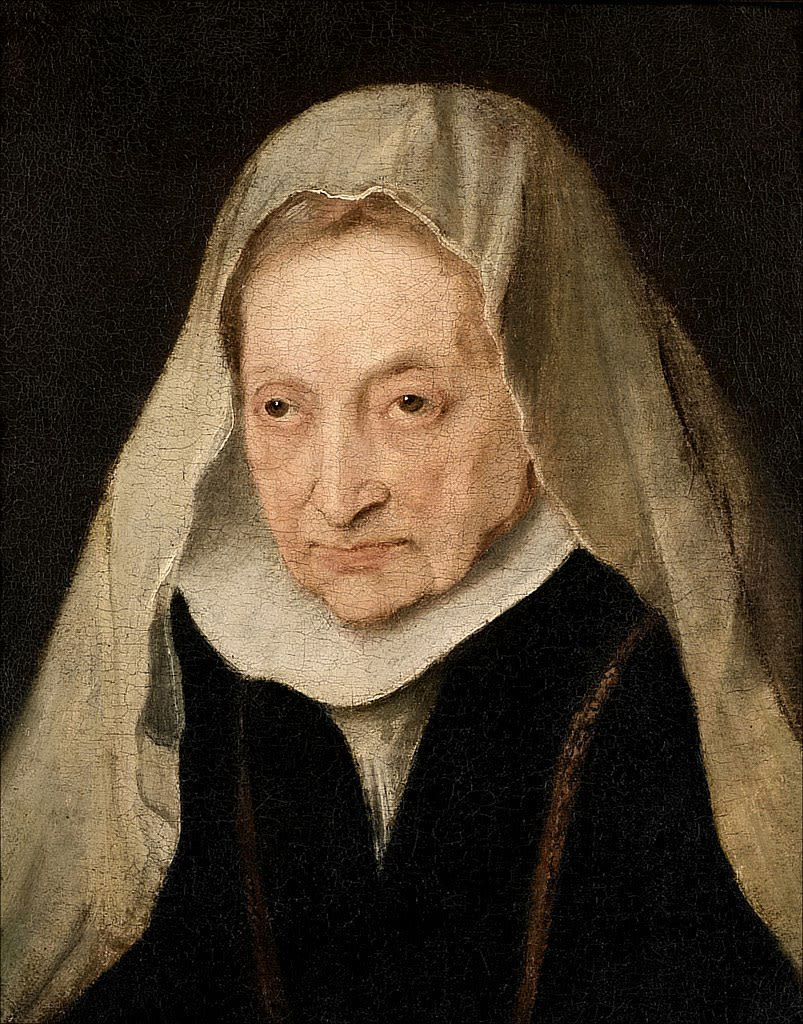Sofonisba Anguissola
The Game of Chess is on display at Bookworms on New Street

Sofonisba Anguissola, Self-portrait at the easel, 1556
Sofonisba Anguissola (c.1532– 16 November 1625), also known as Sophonisba Angussola or Sophonisba Anguisciola, was an Italian Renaissance painter born in Cremona to a relatively poor noble family.
Her contemporary Giorgio Vasari wrote that Anguissola,
“has shown greater application and better grace than any other woman of our age in her endeavours atdrawing; she has thus succeeded not only in drawing, colouring and painting from nature, and copying excellently from others, but by herself has created rare and very beautiful paintings.“
Anguissola received a well-rounded education that included the fine arts, and her apprenticeship with local painters set a precedent for women to be accepted as students of art. As a young woman, Anguissola travelled to Rome where she was introduced to Michelangelo, who immediately recognized her talent, and to Milan, where she painted the Duke of Alba. The Spanish queen, Elizabeth of Valois, was a keen amateur painter and in 1559 Anguissola was recruited to go to Madrid as her tutor, with the rank of lady-in-waiting. She later became an official court painter to the king, Philip II, and adapted her style to the more formal requirements of official portraits for the Spanish court. After the queen’s death, Philip helped arrange an aristocratic marriage for her. She moved to Sicily, and later Pisa and Genoa, where she continued to practice as a leading portrait painter.

Her most distinctive and attractive paintings are portraits of herself and her family, which she painted before she moved to the Spanish court. In particular, her depictions of children were fresh and closely observed. Here the artist and her sisters are depicted in The Chess Game, 1555.
At the Spanish court she painted formal state portraits in the prevailing official style, as one of the first, and most successful, of the relatively few female court painters. Later in her life she also painted religious subjects, although many of her religious paintings have been lost. In 1625, she died at age 93 in Palermo.
Sofonisba Anguissola, although a pioneer female artist, who reached international acclaim, would never have attained this without a supportive father and coming from noble birth. Her father paid for her to have private art tutors, whereas male students would have followed an apprenticeship course. Michelangelo was extremely impressed with her talents in portraiture, so much so, he tutored her informally. However, this tutoring was probably seen more as an asset to gain her a husband, and certainly wasn’t a career move. For example, as a woman, she was never allowed to study anatomy.
Sofonisba was married twice. Both her husbands supported her as a painter, so she was able to continue and explore what became more than just a hobby. She was admired for her naturalistic portraits and took commissions.

Anthony van Dyck painted this portrait of Sofonisba in 1624 when her came to visit her in Genoa, she was 92. Sofonisba had become the city’s foremost portrait painter.
Van Dyck is reported as saying that through their conversations, Sofonisba taught him more about portraiture than anything else.
Sofonisba Anguissola died at the age of 93 in Sicily. Her husband had this inscription put on her grave.
“To Sofonisba, my wife, who is recorded among the illustrious women of the world, outstanding in portraying the images of man. Orazio Lomellino, in sorrow for the loss of his great love.”
Credits:
wikipedia.org/wiki/Sofonisba_Anguissola
